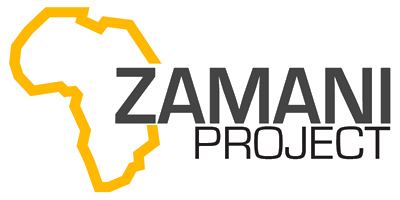 | ||
The Zamani Project is part of the African Cultural Heritage Sites and Landscapes Database. Zamani is a research group at the University of Cape Town, they acquire, model, present and manage spatial and other data of cultural heritage sites. The present focus of the Zamani project is Africa, with the principal objective of developing “The African Cultural Heritage Sites and Landscapes Database”. Zamani comes from the Swahili phrase “Hapo zamani za kale” which means “Once upon a time”, and can be used to mean 'the past'. The word is derived from Arabic root for temporal vocabulary, ‘Zaman,’ and appears in several languages around the world.
Contents
History
The Zamani initiative was conceptualised in the Geomatics Division of the University of Cape Town by Professor Heinz Rüther in 2001 in collaboration with ITHAKA and Aluka [now an initiative of JSTOR] as the “African Cultural Heritage Sites and Landscapes Database” in 2004 with a number of sequential grants from the Andrew W. Mellon Foundation. The project developed out of a long history of heritage documentation in the Geomatics division reaching from conventional mapping of archaeological sites in the early stages of the project to advanced digital modeling of complex sites in its present phase.
Motivation
The documentation project aims to capture spatial information to create a permanent record of important heritage sites for restoration and conservation purposes and as a record for future generations. The project seeks to provide material for education, research and site management and increase international awareness of African heritage on a not-for-profit basis.
Data
Spatial data of architectural structures and historical landscapes are acquired by means of laser scanning, conventional surveys, GPS surveys and photogrammetric imaging with calibrated cameras. Satellite images, aerial photography and full-dome panorama photography are also employed as are contextual photography and videos. The data are captured by the project team during field campaigns. The acquired data are processed to produce Geographic Information Systems (GIS), 3D computer models, maps, architectural sections and building plans and interactive panorama tours of the heritage sites. Sites are seen in the context of their physical environment and therefore landscapes surrounding sites are modelled in 3D using satellite and aerial imagery wherever possible.
Sites
The following is a list of sites which have been documented:
Undocumented sites
These sites have been documented by the project team but not included in the database 1. Algeria, Tassili: Engravings (TARA)
2. Egypt, Luxor: Valley of the Queens (Getty Conservation Institute, L.A.)
3. Jordan, Petra: SIQ canyon and tombs in co-operation with UNESCO
4. Tanzania, Laetoli: Hominid Trackway (Getty Conservation Institute, L.A.)
5. United Arab Emirates, Al Ain: Archaeological site (ADACH, Abu Dhabi)
Access to data
The database is conceptualised as a holistic system and therefore spatial data acquired by the Zamani group are augmented by contextual non-spatial data contributed to JSTOR by various additional partners and organizations. This entire set of materials is made available to the scholarly community via JSTOR's Aluka initiative. Access to this collection is free to all institutions and organizations in Africa and portions of the developing world. Libraries and academic institutions outside of Africa can license access to these collections via JSTOR. The Zamani Project website provides a showcase for the data it produces. Subsets of the 3D data, such as panorama tours and flythrough animations can be viewed on the site as well as examples of plans, sections and photographs.
Funding
The African Cultural Heritage Sites and Landscapes Database exclusively funded by the Andrew W. Mellon Foundation, New York. Administrative support, office space and other academic services are provided by the University of Cape Town and the Geomatics Division at UCT. Additional funds are generated through documentation work for the Getty Conservation Institute, Los Angeles and the World Monuments Fund, New York. In the early stages of the project UNESCO provided financial support for documentation in Lalibela.
Zamani team
The Zamani team members comprises three Chief Scientific Officers (Ralph Schroeder, Roshan Bhurtha and Stephen Wessels) under the leadership of the Principal Investigator, Prof. Heinz Rüther.
